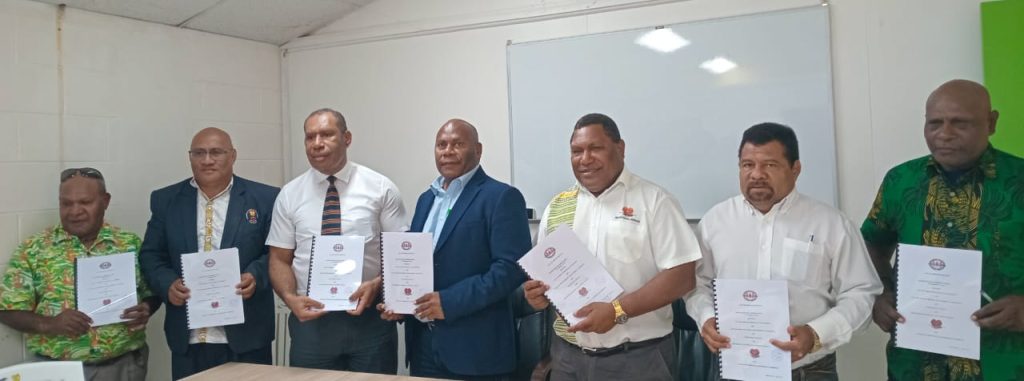East New Britain (ENB) province took a major step recently in resolving land disputes by signing a Memorandum of Understanding (MOU) with the Magisterial Services and the Department of Justice and Attorney General (DJAG).
This agreement will guide the operations of the Provincial Land Dispute Committee (PLDC), aimed at creating a clear process for addressing conflicts over land, especially those involving customary landowners.
Senior Provincial Magistrate, Samuel Lavutul, has been appointed chairman of the committee, while the committee members have been sworn in to commence work on land dispute issues.
Danley Puapena, the Advisor for ENB’s Village Court and Land Mediation (VCLM) Division, expressed appreciation for the collaboration, noting that a reviewed Standard Operating Procedure (SOP) has been created for the committee and mediators to follow.
“I thank you all for coming in to sign this document that will enable us, the responsible agency, to implement it,” Puapena said.
The formation of the VCLM Division in 2019 underscored ENB’s commitment to effective land dispute resolution. Deputy ENB Provincial Administrator for District and LLG Services, Nicholas Larme, explained that both land mediation and village court functions were previously managed under separate administrative structures.
He described the establishment of VCLM as a move to better address land disputes by consolidating these functions.
“We pulled land mediation away from the Division of Lands and Physical Planning, and Village Courts out from the LLGs to form the 9th Strategic Result Area (SRA) under the ENB Provincial Administration, the Village Court and Land Mediation (VCLM),” Larme said.
Larme highlighted the prevalence of disputes related to customary land, which accounts for 90 percent of all land in Papua New Guinea.
With investment projects often causing tensions over land ownership and rights, he emphasized the importance of the PLDC’s work.
“Through the work of the PLDC and its enabling Act, we can settle issues arising with customary landowners,” he explained.
He also noted that the PLDC had been officially endorsed by the Provincial Executive Council (PEC), adding that its SOP clearly directs how land mediators and other public servants are to conduct their duties.
Larme also spoke about the recent establishment of five new Local-Level Governments (LLGs) in ENB and the demand for additional land mediation areas.
The new LLGs will have political representatives by the 2025 LLG elections, and by 2027, ENB will gain an additional electorate for the Baining area.
From DJAG, Deputy Secretary Stanley Raka said the department is committed to supporting provincial initiatives, including through agreements like the PLDC.
“The MOU partnerships with provinces is an ongoing engagement strategy,” Raka said, further highlighting that ENB is the 19th province to join the MOU agreement, with Manus, East Sepik, Enga, and Hela remaining to complete national coverage.
“As the country is approaching 50 years old, there is a need to free up more land for the people,” he added.
Deputy Chief Magistrate Cliveson Phillip described the MOU as a non-binding document that specifies the roles of each party, focusing on coordination.
He emphasized that the ENB agreement includes a well-organized SOP for all land dispute actions.
“What makes this 19th PLDC MOU signing unique is that it has a better organized arrangement where the provincial administration has mainstreamed the preparatory work, in terms of the SOP that goes before the MOU signing,” Phillip said.
He stressed the importance of setting up a secretariat and office for record-keeping and monitoring, a process supported by the Land Dispute Settlement Act.
“You need to set up a secretariat and an office, to ensure records are properly archived.”
“This is part of M&E (monitoring and evaluation),” he said.

